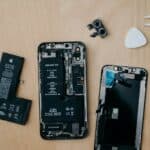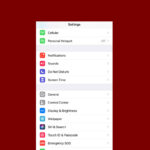BlueStacks is a popular Android emulator that allows you to run Android apps on your computer. Sometimes, you might need to uninstall it to free up space or fix problems, but uninstalling BlueStacks can be tricky. You can usually uninstall BlueStacks through the standard program removal feature on your computer, but sometimes problems can occur, making it much more difficult to uninstall.
Fortunately, there are clear steps and tools you can use to remove BlueStacks completely without causing any issues with your system. To effectively uninstall BlueStacks, follow a series of steps that include preparing for the uninstall, the actual uninstallation process, and making sure all leftover files are deleted.

Removing Bluestacks from Your Computer
Here’s how to completely uninstall BlueStacks from your Windows or Mac computer.
Uninstalling on Windows
- Open the Control Panel. You can find it by searching for “Control Panel” in the Windows search bar.
- Click on “Uninstall a program” under the “Programs” section.
- Locate BlueStacks in the list of installed programs.
- Right-click on BlueStacks and select “Uninstall”.
- Follow the on-screen prompts to complete the uninstallation process.
Sometimes, BlueStacks might leave behind some residual files and folders. To remove these:
- Press Windows Key + R to open the Run dialog box.
- Type “%temp%” and press Enter. This will open the temporary files folder.
- Delete any files or folders related to BlueStacks.
- Similarly, navigate to “C:\ProgramData” and delete the “BlueStacks” folder if it exists. (Note: The ProgramData folder might be hidden by default. You may need to enable “Show hidden files” in File Explorer options.)

Uninstalling on Mac
- Open Finder and go to the “Applications” folder.
- Locate the BlueStacks app.
- Drag the BlueStacks icon to the Trash.
- Empty the Trash to permanently delete the app.
To remove any leftover files:
- Open Finder and press Shift + Command + G.
- In the “Go to the folder” window, type “~/Library” and press Enter.
- Look for folders related to BlueStacks (e.g., “BlueStacks”, “BlueStacks Setup”) within the Library folder and its subfolders.
- Delete any relevant folders.
| Operating System | Uninstallation Steps |
|---|---|
| Windows | Control Panel > Uninstall a program > BlueStacks |
| Mac | Applications folder > Drag BlueStacks to Trash |
Remember to restart your computer after uninstalling BlueStacks to ensure all changes take effect.
Alternatives to Bluestacks
If you’re looking for alternatives to BlueStacks, there are several other Android emulators available. Some popular options include:
- NoxPlayer: Known for its gaming performance and customization options.
- LDPlayer: Another gaming-focused emulator with good compatibility and performance.
- MEmu Play: Offers a balance of performance and features, suitable for both gaming and productivity apps.
- Genymotion: Aimed at developers, with features for testing apps on various virtual devices.
Each emulator has its own strengths and weaknesses, so you can choose one that best suits your needs. Consider factors like performance, compatibility, ease of use, and features when making your decision.
Troubleshooting BlueStacks Uninstallation Issues
BlueStacks App Player is a popular Android emulator for Windows and Mac, allowing users to run Android apps and games on their computers. However, some users encounter difficulties when trying to uninstall it. This guide will walk you through the steps to successfully remove BlueStacks from your system.
Standard Uninstallation Process
The standard uninstallation process is straightforward:
- Open the “Control Panel” (Windows) or “Applications” folder (Mac).
- Locate “BlueStacks App Player” in the list of installed programs.
- Right-click on it and select “Uninstall” (Windows) or drag it to the Trash (Mac).
- Follow the on-screen instructions to complete the uninstallation.
Troubleshooting Uninstallation Issues
If you encounter problems during the standard uninstallation, try these troubleshooting steps:
Using the BlueStacks Uninstaller Tool
BlueStacks provides an uninstaller tool to help remove the software and its components completely. You can download it from the official BlueStacks support website.
Manual Removal of Leftover Files
Sometimes, the uninstaller might not remove all BlueStacks files. You can manually delete these leftover files by following these steps:
- Press the “Windows key + R” to open the Run dialog box.
- Type “%temp%” and press Enter. This will open the temporary files folder.
- Delete all files and folders related to BlueStacks.
Third-Party Uninstaller Software
If the above methods fail, you can use third-party uninstaller software like Revo Uninstaller or IObit Uninstaller. These tools can help remove stubborn programs and their leftover files.
Prevent Future Installation Issues
To prevent future installation or uninstallation issues, consider the following tips:
- Download BlueStacks from the official website to ensure you get a clean and up-to-date version.
- Keep your BlueStacks software updated to avoid compatibility problems.
- Create a system restore point before installing new software, including BlueStacks.
- If you encounter errors during installation or uninstallation, check the BlueStacks support website for troubleshooting guides.
Conclusion
Uninstalling BlueStacks App Player should be a simple process, but sometimes issues can arise. By following the troubleshooting steps outlined in this guide, you should be able to remove BlueStacks successfully. If you continue to experience problems, don’t hesitate to contact BlueStacks support for further assistance.
Key Takeaways
- Uninstalling BlueStacks may require more than using the standard uninstall feature of Windows or Mac.
- The correct uninstallation process includes preparation, removal of the app, and the cleaning of residual files.
- Solutions exist for issues encountered during the uninstallation of the BlueStacks Android emulator.
Preparing to Uninstall BlueStacks
Before attempting to remove BlueStacks from your system, it’s crucial to make sure you’re set up for a clean and trouble-free uninstallation process.
Checking System Requirements
Windows: Confirm that your PC meets the minimum requirements for the uninstallation tool, which typically includes adequate RAM and disk space. If your Windows computer lacks these, the tool might not run properly.
Mac: On a Mac, verify that you have the needed administrative permissions to remove applications. Uninstalling BlueStacks or any software usually requires admin rights to change the necessary files.
Backing Up Essential Data
Data Backup: Before uninstalling BlueStacks, safeguard any important files or game data. Export your data from the BlueStacks app to your computer or cloud storage to avoid losing any progress from your Android apps.
Android Settings: If certain settings within the BlueStacks app are crucial for you, note them down or take screenshots. These can be helpful if you decide to reinstall BlueStacks later and want to restore your configuration.
Closing BlueStacks and Related Processes
Task Manager (Windows): Use the Task Manager to close BlueStacks and its related processes. To do this, press Ctrl + Shift + Esc, look for BlueStacks processes, select them, and click ‘End Task.’
Force Quit (macOS): Mac users can employ the force quit feature for the same purpose. Press Command + Option + Esc, choose BlueStacks, and then click ‘Force Quit.’ This ensures that all BlueStacks processes are terminated before uninstallation.
Uninstalling BlueStacks Step by Step
Removing BlueStacks from your computer involves a few important steps to ensure that the program is completely deleted without leaving behind any residual files. This secures a clean slate for your system, whether you’re planning to reinstall BlueStacks or simply want it removed.
Using Standard Uninstallation Methods
To remove BlueStacks, start by utilizing the built-in uninstallation feature in your operating system.
For Windows users:
- Go to the Start Menu.
- Search for Control Panel and open it.
- Select Uninstall a program under the Programs section.
- Find BlueStacks in the list, right-click on it, and choose Uninstall.
For Mac users:
- Open the Finder.
- Click on Applications.
- Drag the BlueStacks icon to the Trash, or right-click and select Move to Bin.
After following these steps, the standard uninstall process will commence.
Manually Deleting Leftover Files and Folders
Sometimes, uninstallation may leave behind residual files. Manually removing these is a critical step to fully delete BlueStacks from your device.
On Windows:
- Open File Explorer.
- Navigate to the ProgramData folder (this may be hidden; enable the view of hidden files and folders).
- Delete the BlueStacks folder if it still exists.
On Mac:
- Use the Finder to search for any remaining BlueStacks files.
- Move to Bin any files or folders associated with BlueStacks.
Remember to empty the Trash or Recycle Bin to ensure these files are permanently removed.
Cleaning the Registry Entries
Windows users need to be cautious when editing the Windows Registry, as incorrect changes can cause system issues. If you’re comfortable proceeding, here’s how you can clear leftover BlueStacks registry keys:
- Press Windows Key + R and type regedit to open the Registry Editor.
- Navigate to HKEY_LOCAL_MACHINE, then to SOFTWARE.
- Look for entries related to BlueStacks, right-click on them, and select Delete.
It’s advised to use a cleaner tool provided by BlueStacks for a safer and more thorough removal, especially for registry entries. This step ensures the complete deletion of BlueStacks from your system’s registry.
Frequently Asked Questions
When uninstalling BlueStacks, you might encounter issues. This section tackles common problems and provides clear solutions to effectively remove the app player from your system.
How do I completely remove BlueStacks from my Windows 10 computer?
To fully remove BlueStacks from Windows 10, access the Control Panel, select ‘Uninstall a program’, and then choose BlueStacks to uninstall. If this standard method does not work, you can use the Registry Editor by typing ‘regedit’ in the Run dialog box, which is opened with Windows Key + R, and delete BlueStacks entries.
What steps should I follow if BlueStacks won’t uninstall through the Control Panel?
If you can’t uninstall BlueStacks through the Control Panel, you can manually delete its files. First, end all BlueStacks processes via the Task Manager. Then, delete the BlueStacks folders from the Program Files, Common Files, and relevant entries in the Registry Editor, ensuring you have a backup before making changes to the registry.
Is there a dedicated uninstaller tool for BlueStacks, and where can I find it?
BlueStacks does offer a dedicated uninstaller tool. This tool is specifically designed for removing all versions of BlueStacks, including BlueStacks 5 and BlueStacks Services. You can download it from the official BlueStacks support website.
Can BlueStacks services be removed separately from the app player itself?
Yes, BlueStacks services can be removed separately. This might require using the dedicated uninstaller tool, which is capable of removing not just the app player but also any related services that run in the background.
What could be causing an error during the uninstallation process of BlueStacks?
Errors during the uninstallation process can be due to running BlueStacks services or files that are in use while trying to uninstall. Ensure that BlueStacks is completely closed, including any associated services, and that you are logged in as an administrator.
Are there any additional steps to ensure BlueStacks is fully uninstalled from Windows 11?
Under Windows 11, after uninstalling BlueStacks through the Control Panel or Settings, it’s also wise to check the Program Files and AppData folders for any remaining files. Remove these and clear your system’s temporary files to ensure complete removal of BlueStacks.





